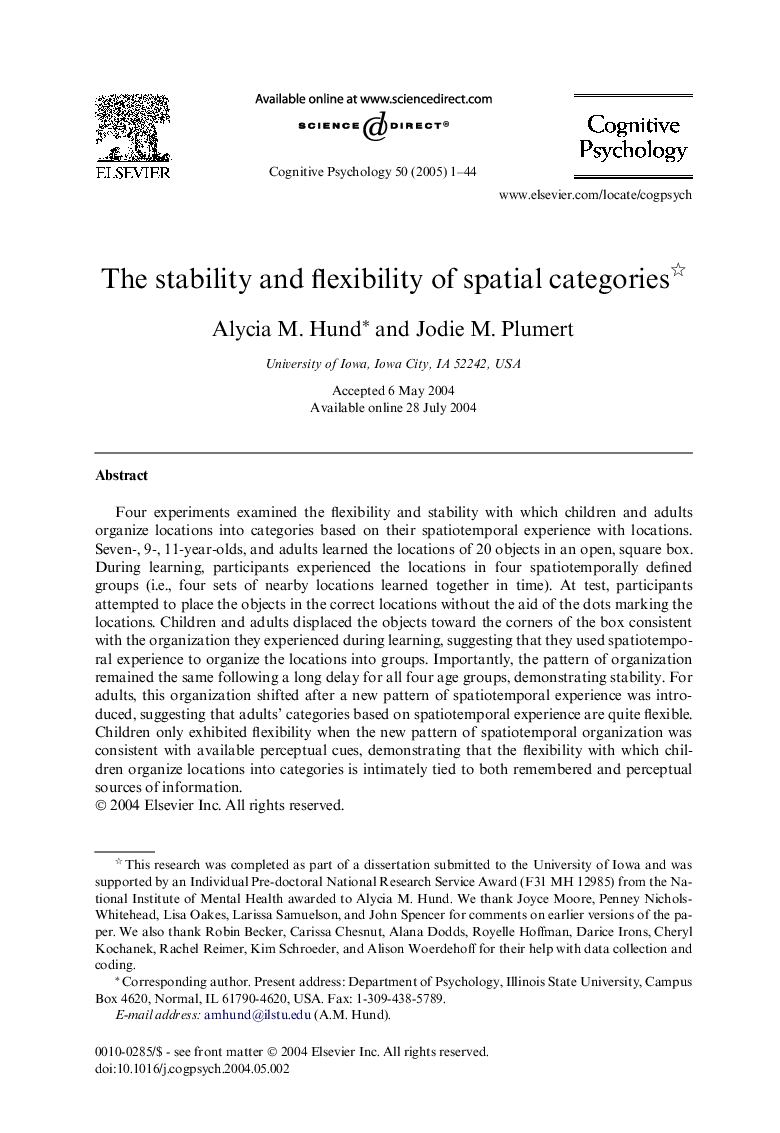| Article ID | Journal | Published Year | Pages | File Type |
|---|---|---|---|---|
| 10452468 | Cognitive Psychology | 2005 | 44 Pages |
Abstract
Four experiments examined the flexibility and stability with which children and adults organize locations into categories based on their spatiotemporal experience with locations. Seven-, 9-, 11-year-olds, and adults learned the locations of 20 objects in an open, square box. During learning, participants experienced the locations in four spatiotemporally defined groups (i.e., four sets of nearby locations learned together in time). At test, participants attempted to place the objects in the correct locations without the aid of the dots marking the locations. Children and adults displaced the objects toward the corners of the box consistent with the organization they experienced during learning, suggesting that they used spatiotemporal experience to organize the locations into groups. Importantly, the pattern of organization remained the same following a long delay for all four age groups, demonstrating stability. For adults, this organization shifted after a new pattern of spatiotemporal experience was introduced, suggesting that adults' categories based on spatiotemporal experience are quite flexible. Children only exhibited flexibility when the new pattern of spatiotemporal organization was consistent with available perceptual cues, demonstrating that the flexibility with which children organize locations into categories is intimately tied to both remembered and perceptual sources of information.
Related Topics
Life Sciences
Neuroscience
Cognitive Neuroscience
Authors
Alycia M. Hund, Jodie M. Plumert,
